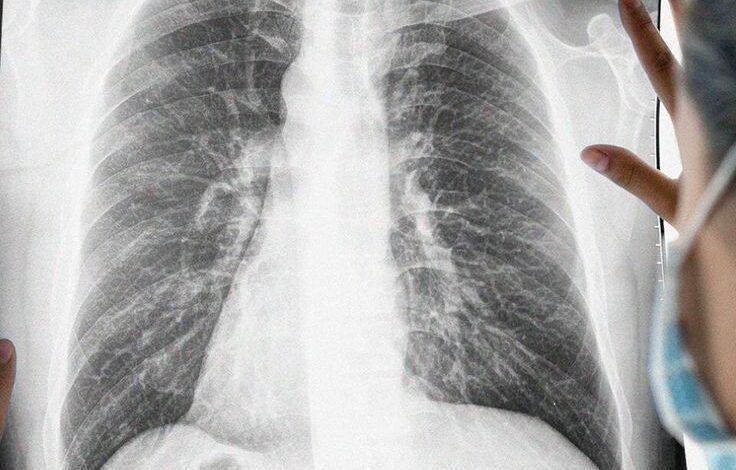How Does Mountain Removal Increase Lung Cancer Risk? Understanding the Connection
How Does Mountain Removal Increase Lung Cancer Risk? Understanding the Connection

Mountain removal is more than an environmental issue—it’s a public health crisis. Over the years, lung cancer rates have been steadily climbing in regions close to mountaintop removal mining sites. This troubling trend raises an urgent question: how does mountain removal mining increase the risk of lung cancer?
This blog will explore the connection between mountain removal and lung cancer. We’ll take a closer look at what mountain removal entails, how it impacts the environment, and, most critically, how it endangers human health.
If you’re ready to understand the risks and what can be done to combat them, keep reading.
What is Mountain Removal Mining?
Mountaintop removal mining (MTR), a form of surface mining, is commonly used to extract coal in parts of Appalachia, particularly in West Virginia, Kentucky, and Virginia. The process is as destructive as it sounds. Mining companies literally blast the tops off mountains to access coal seams buried within.
Here’s how it works:
- Blasting with explosives removes the summit of the mountain.
- Extraction allows miners to access valuable coal deposits beneath the surface.
- Disposal involves pushing the leftover debris—commonly known as “overburden”—into nearby valleys and streams.
While this method is effective for acquiring coal, it wreaks havoc on the surrounding environment and communities, producing significant air and water pollution in the process.
But why does this matter for health? The pollutants released during mountain removal do more than harm ecosystems—they impact the air we breathe.
Environmental Effects of Mountain Removal
Mountain removal mining is notorious for its environmental fallout. The process releases harmful pollutants, including particulates and toxic chemicals, into the air. These byproducts travel far from the original mining site, affecting neighboring towns and communities.
Here’s a closer look at the primary pollutants associated with mountaintop removal:
1. Particulate Matter (PM)
When explosives are used to break apart rocks, they release fine particles into the air. These particles are small enough to penetrate deep into the lungs when inhaled.
2. Heavy Metals
Debris from mountain removal mining contains heavy metals like arsenic, mercury, and lead. These toxic substances can be carried by the wind, contaminating the air and soil in nearby areas.
3. Coal Dust
Coal processing releases coal dust, full of carcinogenic compounds, into the atmosphere. The effects of long-term coal dust exposure are particularly concerning for respiratory health.
4. Silica
During the mining process, silica dust—a known cause of lung diseases like silicosis—is also released. Prolonged exposure to silica has been linked to lung cancer.
The result? Communities are left grappling with contaminated air that significantly increases their risk of respiratory illness, particularly lung cancer.
How Pollutants from Mountain Removal Lead to Lung Cancer
There’s a direct connection between the pollutants produced during mountain removal activities and the rising rates of lung cancer in nearby communities. But how exactly does it happen?
1. Chronic Exposure to Toxic Air
When people live near MTR sites, they’re exposed to poor air quality daily. Breathing in particulate matter, heavy metals, and coal dust over time can damage lung tissue, leading to chronic inflammation, scarring, and, in some cases, the development of cancerous cells.
2. Carcinogenic Properties of Coal Dust and Heavy Metals
Studies have shown that substances like arsenic and polycyclic aromatic hydrocarbons (PAHs) in coal dust are carcinogenic. Prolonged exposure increases the likelihood of cell mutations in the lungs.
3. Impact Beyond Immediate Communities
Because wind can carry pollutants far beyond the mining sites, even communities more removed from MTR regions are still at risk. This means the health impact of mountain removal extends beyond localized areas.
The evidence is piling up, and it’s clear that people living near mountaintop mining operations are paying the price with their health.
Case Studies Linking Mountain Removal and Lung Cancer
To truly grasp the magnitude of this issue, it helps to look at real-world examples. Numerous studies illustrate the undeniable link between mountain removal and increased lung cancer rates:
- Dr. Michael Hendryx’s Study
A renowned researcher, Dr. Hendryx conducted a groundbreaking study revealing that areas affected by mountaintop removal mining experience significantly higher rates of lung cancer compared to non-mining regions. His research stressed how air quality in these areas is a major contributing factor to the disease.
- Coal River Valley (West Virginia)
Residents of the Coal River Valley are among the hardest hit by mountaintop removal. Reports show an alarming increase in respiratory diseases, including lung cancer, in this Appalachian region. This has led to heightened activism and advocacy for stricter regulations in the region.
- Appalachian Region Analysis
A meta-analysis focused on the Appalachian region has consistently found higher cancer mortality rates, linking them to widespread mining practices. Poor air quality and long-term exposure to mining pollutants were cited as key contributors.
These case studies underscore the urgency of addressing the health implications of mountain removal on vulnerable communities.
What Can Be Done? Solutions for Protecting Communities
While the risks of mountain removal are severe, there are solutions to mitigate its impact. Addressing this issue requires joint efforts from policymakers, technology providers, and local communities.
1. Policy and Regulation
Stricter environmental policies must be enforced to regulate air pollution from mountaintop mining. This includes setting limits on permissible particulate matter levels and heavy metal emissions.
2. Adopting Cleaner Mining Practices
Advancements in mining technology can help minimize airborne pollutants. For instance, utilizing wet dust suppression techniques can significantly reduce airborne dust during the mining process.
3. Community Monitoring Programs
Empowering local communities to monitor air quality can bridge the gap between advocacy and action. Providing resources such as air quality sensors can help identify pollution hotspots and inform regulatory bodies.
4. Transitioning to Clean Energy Sources
The ultimate solution lies in reducing reliance on coal and transitioning to cleaner energy sources like wind and solar. This shift won’t happen overnight but is crucial to ensuring long-term health and environmental sustainability.
By taking these steps, we can tackle the root cause of the issue and protect the health of communities for generations to come.
A Breath of Fresh Air for Vulnerable Communities
The link between mountain removal mining and lung cancer is well-documented, yet often overlooked. By raising awareness, advocating for stricter policies, and supporting clean energy, we can work toward eliminating the detrimental effects of mountaintop mining.
Community health should never be the price of economic gain. If you live in or near mining regions, get involved by advocating for change in your community. Encourage local leaders to prioritize environmental protection and support organizations dedicated to clean energy solutions.
After all, everyone deserves to breathe clean air.



